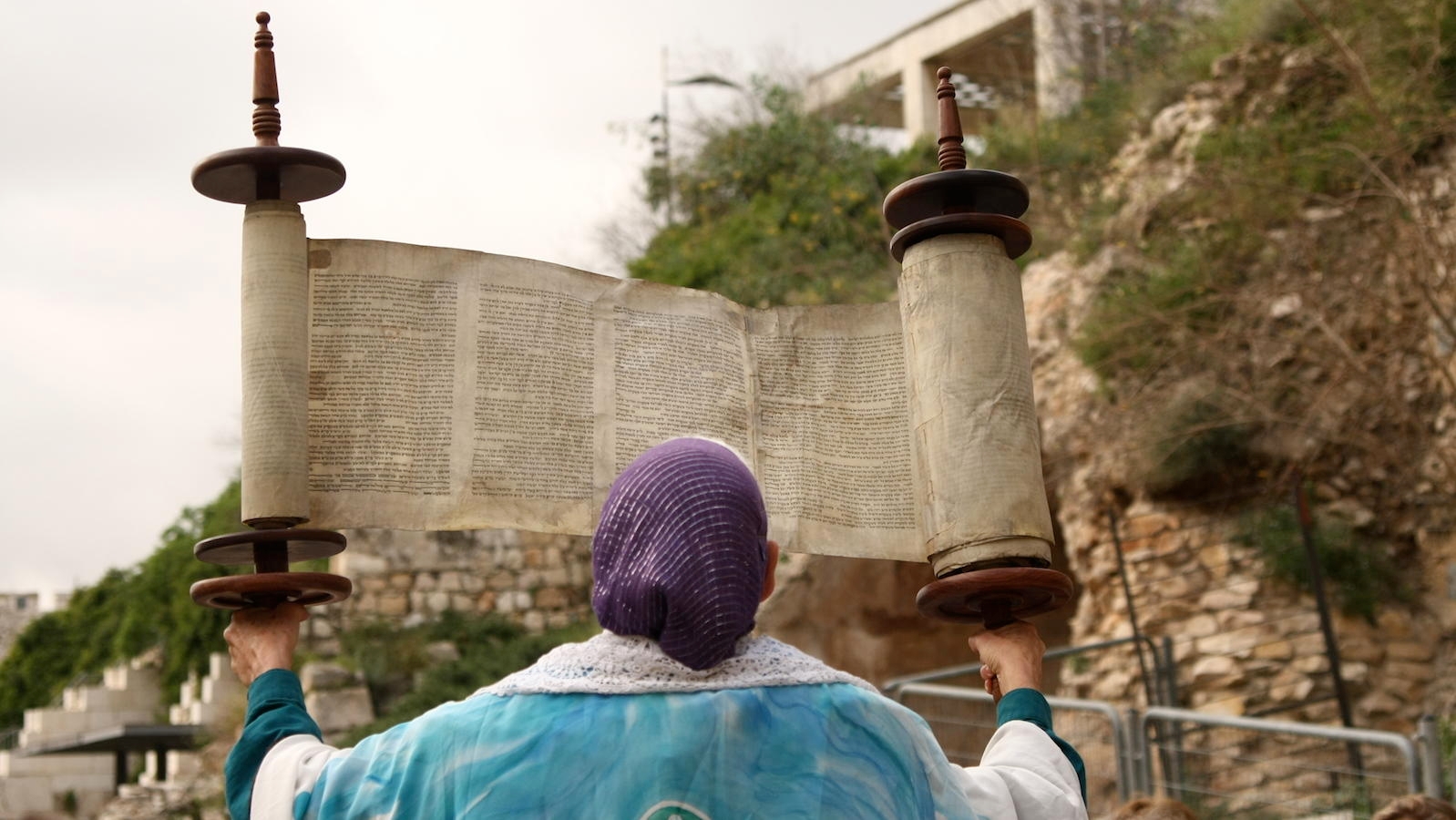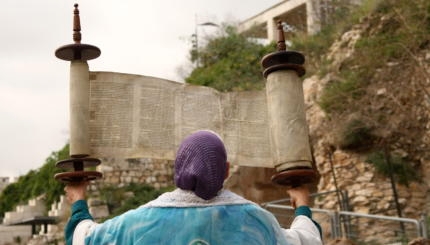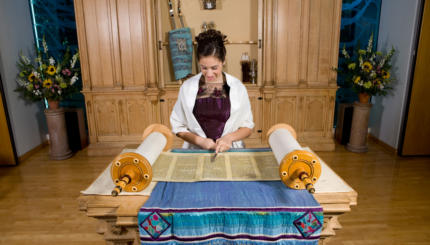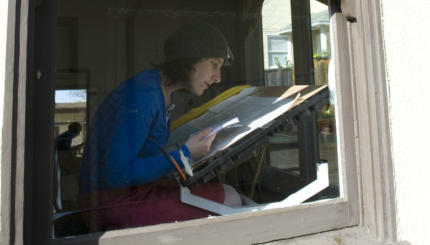The verse “And Ezra opened the book in the sight of all the people” (Neh. 8:5) is the biblical precedent for raising an open scroll so that the entire congregation can view the script.
The person who lifts the Torah traditionally opens at least three columns of the scroll before raising it up as high as possible, and then slowly turns to show the script to all assembled. This allows everyone in the congregation to see the text and proclaim “v’zot ha-Torah” (this is the Torah [that Moses placed before the Children of Israel]; Deut. 4:44). Some worshipers raise the edges of the toward the script and then kiss the , though the (Jewish law) requirement is merely to bow toward the open Torah.
Ashkenazi and Sephardic Traditions
Ashkenazim and Sephardim have developed different traditions for the timing and wording of this dramatic ceremony.
In Ashkenazi congregations, the Torah scroll is raised after the reading is completed, whereas Jews raise the Torah scroll before the reading begins. In addition, in the Ashkenazi rite there is the addition of a second verse, “at the Lord’s bidding through Moses” (Num. 9:23). Although now everyone at an Ashkenazic service says both verses together, at one time only the person who raised the Torah may have recited the first line, while the second was the congregational response.

Help us keep Jewish knowledge accessible to millions of people around the world.
Your donation to My Jewish Learning fuels endless journeys of Jewish discovery. With your help, My Jewish Learning can continue to provide nonstop opportunities for learning, connection and growth.
“ ” is the term for raising the Torah, which is performed by the magbiah; “gelilah” is the word for rolling up and tying the Torah scroll and replacing its cover and ornaments, which is done by the goleil. The does not appear to separate these two functions, referring primarily to the latter (Meg. 32a). Indeed, at one time, the person who received the last may have performed both of these duties.
However, having one person responsible for both holding the Torah and tying the binder around the scroll could be fraught with hazard and presumably led to the decision to share the honor between two people. Although these activities do not require the recitation of a blessing, hagbah and gelilah are considered religiously significant roles. Some Rabbis viewed the honor of gelilah as having the spiritual reward of all the aliyot combined, and thus this task was traditionally reserved for the most distinguished members of the congregation. Over time, hagbah became the more coveted task.
In Western Sephardic congregations there were special groups of individuals–levantadores (“master lifters” of the scroll)–who were exclusively honored with the role of hagbahso as to minimize the danger of dropping the scroll or handling it in a degrading way. In modern Sephardic congregations, gelilahis generally performed by one of the gabbaim standing on either side of the Torah reader.
Reprinted with permission from The JPS Guide to Jewish Traditions, published by the Jewish Publication Society.



